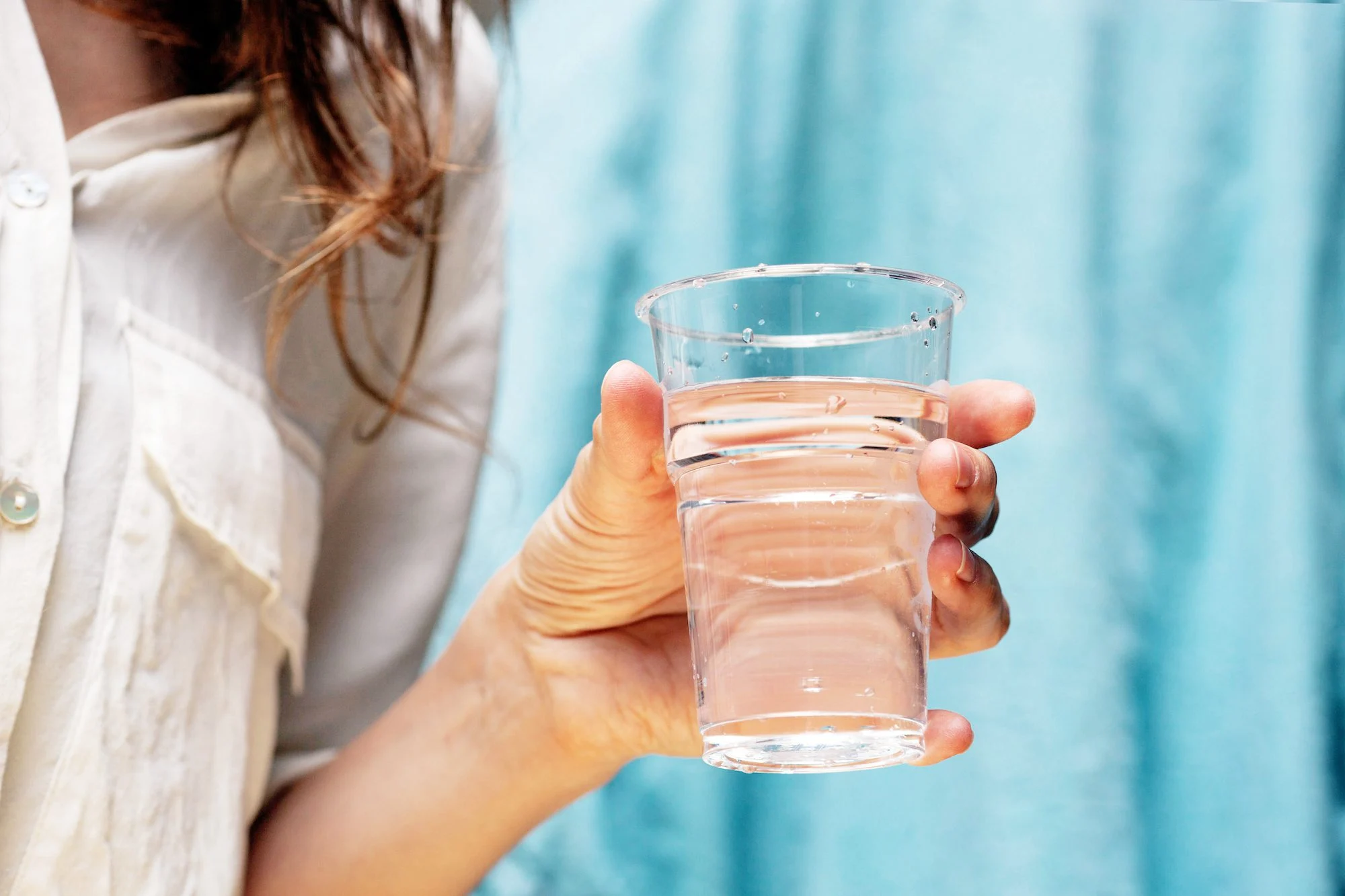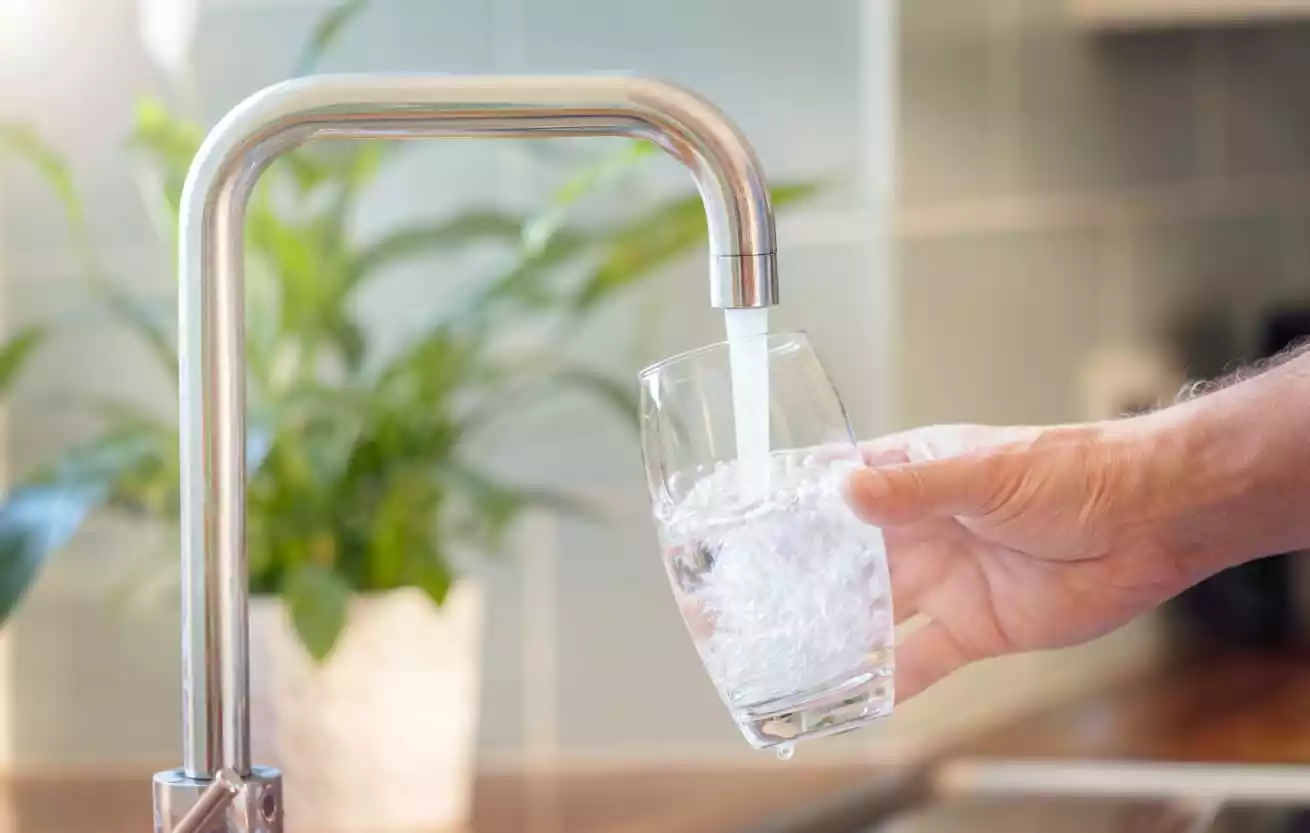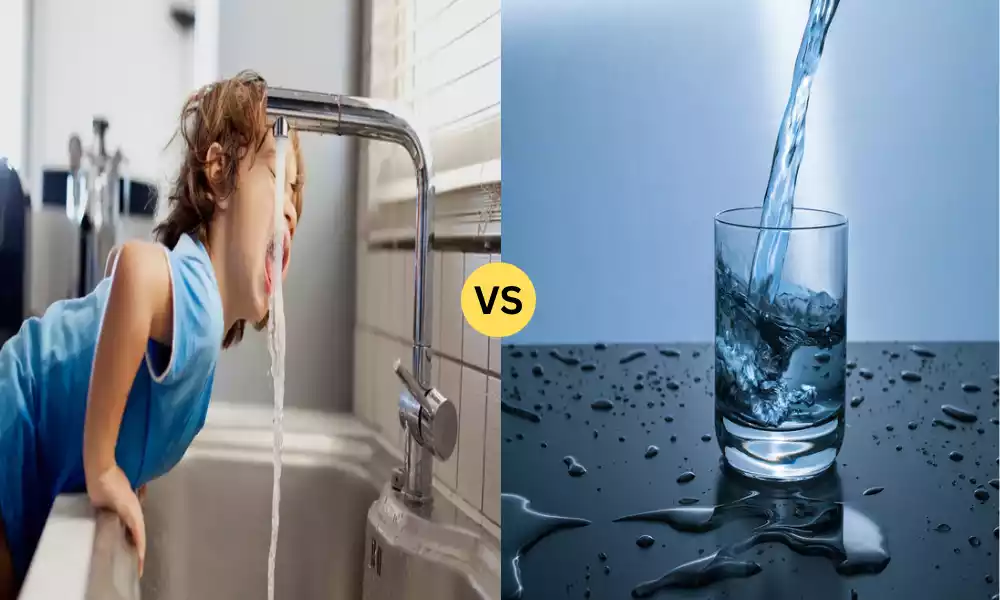Distilled and Purified Water are both high-purity water types achieved through different purification processes. Distilled water is created by boiling it and then condensing the steam back into liquid, effectively removing most of its contaminants. Purified water, conversely, undergoes one or multiple purification methods, such as reverse osmosis, carbon filtration, or UV treatment, to reduce or eliminate impurities. While both provide clean water options, their specific applications, taste, and mineral content can vary based on the purification technique employed.
What is Distilled Water?
Distilled water is a type of purified water that has been boiled to produce steam, which is then cooled and condensed back into a liquid in a separate container. This process is called distillation.

Here’s a breakdown of the process and the characteristics of distilled water:
Distillation Process:
- Boiling: Water is heated until it boils and turns into steam or vapor. As it boils, the water leaves behind most of its impurities, such as salts, minerals, and contaminants.
- Condensation: The steam is then cooled, usually by passing it through coils or a cooling system, causing it to condense back into liquid water.
- Collection: The condensed water is collected in a separate container, separated from the original impure residue.
Characteristics of Distilled Water:
- Purity: Distilled water is one of the purest forms of water, free from most dissolved solids, salts, and minerals. However, some volatile organic compounds (VOCs) might still be present if they have boiling points close to or lower than that of water.
- Neutral Taste: Due to the absence of dissolved minerals and salts, distilled water has a neutral, sometimes described as “flat,” taste.
- No Microorganisms: The boiling process kills bacteria, viruses, and other pathogens, making distilled water sterile unless it gets contaminated after distillation.
- Uses: Distilled water is used in various applications where water purity is crucial, such as in laboratories, medical facilities, automotive cooling systems, and certain manufacturing processes. It’s also used in some household appliances like steam irons and humidifiers to prevent mineral buildup.
- Health Considerations: While distilled water is safe to drink, it lacks the beneficial minerals found in natural water sources. Some argue this can have health implications if it’s the primary source of drinking water over extended periods, though the body typically receives essential minerals primarily through food.
Distilled water is a form of purified water produced by boiling it into steam and then condensing the steam back into liquid, leaving behind most of the original impurities.
Health Benefits of Distilled Water
Distilled water is one of the purest forms of water, as it undergoes a process of distillation which removes most of its impurities. While all forms of clean water are crucial for health, distilled water offers some specific benefits and considerations:

Health Benefits of Distilled Water:
- Elimination of Contaminants: Distilled water is virtually free from contaminants such as bacteria, viruses, and other pathogens, reducing the risk of waterborne diseases.
- Absence of Chemicals: Unlike some tap waters, distilled water doesn’t contain chemicals like chlorine, fluoride, and others that might be added during municipal water treatment.
- Reduced Heavy Metals: Distillation effectively removes heavy metals like lead, mercury, and arsenic, which can be harmful when ingested in significant amounts.
- Neutral Taste: For individuals sensitive to the taste of minerals or treatment chemicals in tap water, distilled water offers a neutral taste.
- Safety in Compromised Situations: In emergency situations where water quality might be questionable, distilled water provides a safe alternative.
- Consistency: For people who need a consistent water quality due to health reasons or specific dietary requirements, distilled water provides reliable consistency in its purity.
Considerations:
- Lack of Minerals: Distilled water doesn’t contain beneficial minerals like calcium and magnesium, which are naturally found in many water sources. Over time, exclusively drinking distilled water could potentially result in a slight reduction in mineral intake, though most individuals get the majority of these minerals from their diet.
- Acidity: Distilled water can be slightly acidic and, in some instances, may leach minerals from whatever container it’s stored in. This is why it’s essential to store distilled water in appropriate containers.
- Taste: While some appreciate the neutral taste of distilled water, others find it flat or bland due to the lack of dissolved minerals.
- Over-Purification Concerns: There’s a debate about whether drinking ultra-pure water, like distilled water, can have any negative health implications, such as mineral leaching from the body. Most experts believe that the effects, if any, are minimal, especially if one’s diet is balanced and rich in essential minerals.
Distilled water provides a high level of purity, making it free from many contaminants found in untreated water. While it offers several health benefits, especially in situations where water quality is compromised, it’s essential to consider its lack of natural minerals and the potential implications of this over the long term.
Cons of Distilled Water
Distilled water, due to its production process, offers a high degree of purity. There are some drawbacks and concerns associated with its consumption and production:
- Loss of Beneficial Minerals: The distillation process removes almost all minerals from the water, including beneficial ones like calcium, magnesium, and potassium. Regular consumption of distilled water might not provide these minerals that are present in other water sources.
- Flat or Bland Taste: Due to the absence of minerals, many people find the taste of distilled water to be flat or bland compared to spring or mineral water.
- Potential for Acidity: Without the presence of alkalizing minerals, distilled water can be slightly acidic. There’s some debate about the long-term effects of consuming acidic water, though conclusive evidence is still lacking.
- Leaching from Storage: Distilled water’s purity makes it reactive, meaning it can absorb carbon dioxide from the air, making it slightly acidic. This acidity can cause it to leach substances from its storage container, especially if stored in certain plastics or metal containers.
- Cost and Energy Intensive: Distillation requires a significant amount of energy to heat and then cool water. If done on a large scale or frequently at home, this could lead to higher energy bills and environmental concerns related to energy consumption.
- Water Waste: Distillation doesn’t use 100% of the input water. Some water remains behind with the extracted impurities, leading to waste.
- Potential Health Concerns: While not conclusively proven, there’s some debate on whether consistently consuming distilled water can lead to mineral deficiencies in the body or potentially leach minerals from the body due to its lack of mineral content.
- Recontamination Risks: If distilled water is not stored or handled properly after the distillation process, it can be exposed to contaminants.
- Environmental Impact: If relying on commercially produced distilled water, the production, packaging, and transportation can have associated environmental impacts.
- Maintenance of Distillation Equipment: At-home water distillers require regular cleaning and maintenance. If not cleaned properly, residues can accumulate and potentially contaminate subsequent batches of distilled water.
While distilled water provides a high level of purity beneficial in certain applications, it’s essential to consider its drawbacks, especially regarding taste, potential health concerns, and environmental impacts. For regular drinking purposes, it’s advisable to make an informed choice based on individual needs and preferences.
What is Purified Water?
Purified water is water that has undergone a treatment process to remove or reduce contaminants, impurities, and unwanted substances to a level that meets specified standards of purity. The contaminants can include bacteria, viruses, fungi, algae, metals, minerals, and chemical pollutants.

Methods of Purifying Water:
Several methods can be employed to purify water. Some of the most common methods include:
- Distillation: As previously described, this method involves boiling water to produce steam, which is then cooled and condensed back into a liquid in a separate container, leaving behind most impurities.
- Reverse Osmosis (RO): In this process, water is forced under pressure through a semi-permeable membrane. The membrane filters out larger molecules, ions, and contaminants, allowing only pure water to pass through.
- Deionization: This method uses ion-exchange resins to remove mineral salts and other ions from water.
- Activated Carbon Filtration: Activated carbon filters work by attracting and trapping contaminants as water flows through. They’re especially effective at removing organic compounds, chlorine, and improving taste and odor.
- Ultraviolet (UV) Treatment: UV light can effectively kill bacteria, viruses, and other pathogens. However, it doesn’t remove dissolved solids or chemical contaminants.
- Micron Filtration: This process uses filters that physically strain out particles and organisms based on their size.
- Ozonation: Ozone gas is introduced into water, where it oxidizes contaminants, effectively disinfecting the water and breaking down pollutants.
Characteristics of Purified Water:
- Purity Level: To be considered “purified water,” the water must meet certain purity standards. For instance, in the U.S., for water to be labeled as purified, it must have total dissolved solids (TDS) of 10 parts per million (ppm) or less.
- Variable Methods: The term “purified water” doesn’t specify the method used, so it can be achieved using any combination of the aforementioned processes or other treatments.
- Taste: Removing contaminants, especially chlorine and certain organic compounds, can improve the taste and odor of water.
- Uses: Purified water is used for drinking, in manufacturing, in laboratories, in medical applications, and more.
Purified water is water that has been treated to achieve a high level of purity, making it safe and often superior to regular tap water or some natural sources in many contexts.
Health Benefits of Purified Water
Purified water, which has been treated to remove contaminants and impurities, offers several health benefits, especially when compared to untreated or contaminated water sources.

Here are the primary health benefits of purified water:
- Reduced Risk of Waterborne Diseases: Purified water is generally free from harmful bacteria, viruses, and parasites that can cause diseases like cholera, dysentery, and giardiasis.
- Absence of Harmful Chemicals: Unlike some untreated water sources, purified water typically doesn’t contain harmful chemicals like chlorine, fluoride, and other potential contaminants, unless they’re reintroduced for specific purposes, such as chlorination for residual disinfection.
- Elimination of Heavy Metals: Purification processes can effectively remove heavy metals like lead, mercury, and arsenic, which can pose serious health risks when consumed in significant amounts.
- Improved Taste and Odor: Purified water, especially when treated using activated carbon, often tastes and smells better than untreated water, making it more palatable. This can encourage better hydration habits.
- Protection Against Toxic Substances: In areas where the water might be polluted with industrial waste or agricultural runoff, purifying water can eliminate toxins that might otherwise be ingested.
- Consistent Water Quality: Purified water offers a consistent quality, which can be especially beneficial for people with weakened immune systems or sensitivities to certain chemicals or contaminants.
- Prevention of Mineral Build-up: In areas with hard water, purification can remove excess minerals like calcium and magnesium, preventing build-up in appliances and potentially reducing the risk of kidney stone formation in susceptible individuals.
- Optimal Hydration: Drinking clean, purified water supports overall health by aiding in digestion, improving skin complexion, facilitating detoxification, and maintaining bodily functions.
Considerations:
- Lack of Beneficial Minerals: Similar to distilled water, some purification processes can remove beneficial minerals from the water. While these minerals can be obtained from dietary sources, some people appreciate the additional intake from mineral-rich water.
- Environmental Impact: While purified water offers health benefits, the purification process, especially when relying on bottled purified water, can have environmental implications, from plastic waste to the carbon footprint associated with transporting water.
Purified water provides numerous health benefits, primarily by eliminating potential contaminants and ensuring the water’s safety for consumption. It’s essential to balance these benefits with environmental considerations and the potential loss of beneficial minerals.
Cons of Purified Water
While purified water offers several health and safety benefits, there are also some drawbacks or concerns associated with its consumption and production:
- Loss of Beneficial Minerals: Some purification processes remove essential minerals like calcium, magnesium, and potassium from the water. These minerals are beneficial for health, and their absence can give the water a flat taste. Moreover, these minerals can play roles in metabolic processes and heart health.
- Environmental Concerns:
- Plastic Waste: Bottled purified water contributes significantly to plastic waste, which is harmful to the environment and marine life.
- Carbon Footprint: The transportation of bottled purified water, especially over long distances, contributes to greenhouse gas emissions.
- Water Waste: Some purification processes, notably reverse osmosis, waste a significant amount of water for every gallon purified.
- Cost: Regularly buying bottled purified water can be more expensive over time compared to using tap water or home purification systems.
- Storage Concerns: If not stored properly, purified water can become contaminated. For example, storing in plastic containers under sunlight can lead to the leaching of harmful chemicals from the plastic into the water.
- Over-reliance: Exclusively relying on bottled purified water can contribute to complacency regarding the maintenance and improvement of public water supply systems.
- Potential for Recontamination: If purified water is not stored or handled properly, it can be exposed to contaminants post-purification.
- Chemical Exposure: In some cases, purification might not remove all contaminants, especially if the purification method isn’t suited to a particular contaminant. For instance, certain organic compounds or specific pesticides might remain in trace amounts.
- Health Risks from Improper Purification: If purification systems are not adequately maintained or operated, there’s a risk of incomplete purification or even the introduction of contaminants. For example, old and uncleaned filters can become breeding grounds for bacteria.
- Loss of Natural Taste: Some people prefer the taste of natural spring water, which contains minerals that give it a distinct taste. Purified water, especially when stripped of all its minerals, might seem bland in comparison.
- Over-Purification Concerns: There’s ongoing debate and research into whether drinking ultra-purified water over long periods can have any negative health implications, such as mineral leaching from the body.
While purified water is generally safe and offers health benefits over contaminated or untreated water, it’s crucial to be aware of the potential downsides, especially from environmental and cost perspectives. Using sustainable methods for purification and being informed about the source and treatment of purified water can help in making informed decisions.
Comparison table of Distilled and Purified Water
Here’s a comparison table between distilled and purified water:
| Aspect | Distilled Water | Purified Water |
|---|---|---|
| Definition | Water boiled into steam and then condensed back into liquid, removing most impurities. | Water treated to remove contaminants using various methods like distillation, deionization, reverse osmosis, or filtration. |
| Impurities | Removes nearly all impurities and dissolved salts. | Removes most or all impurities, but the extent can vary based on the purification method used. |
| Taste | Often flat due to the absence of minerals and salts. | Taste can vary depending on the purification method. Some methods retain certain minerals, affecting taste. |
| pH Level | Typically neutral, but can be slightly acidic due to absorbed CO2. | Can vary depending on the source and treatment method. Some processes might slightly adjust the pH. |
| Applications | Laboratories, automotive cooling systems, medical applications. | Drinking, pharmaceuticals, cooking, and various industrial processes. |
| Cost | Typically higher due to the energy-intensive distillation process. | Cost can vary widely based on the purification method and scale of production. |
| Methods | Boiling and condensation. | Can include distillation, reverse osmosis, deionization, filtration, and other treatments. |
The properties and characteristics mentioned in this table are generalized and might vary based on specific circumstances or standards.
Which is Best Distilled vs Purified Water?
Choosing between distilled and purified water depends on individual needs, preferences, and the intended use of the water. Both types of water offer high levels of purity, but they have distinct characteristics and potential advantages and disadvantages.

Here’s a comparative summary to help you decide:
Distilled Water:
- Purity: Distilled water undergoes a process that involves boiling the water and then condensing the steam into a clean container, ensuring it’s free from most contaminants.
- Taste: It typically has a flat or bland taste due to the absence of minerals.
- Applications: It’s ideal for applications that require high purity, such as in laboratories, medical environments, or certain manufacturing processes.
- Environmental Impact: Distillation can be energy-intensive, especially if done on a large scale.
- Mineral Content: Distilled water lacks beneficial minerals.
- Cost: Distillation, especially at home, can lead to higher energy costs.
Purified Water:
- Purity: Purified water can be processed using a variety of methods, including distillation, reverse osmosis, carbon filtration, UV treatment, and more. It must meet certain purity standards, like having a TDS (total dissolved solids) level below a specific threshold.
- Taste: Its taste can vary based on the purification method used. For example, activated carbon filtration can improve taste and odor.
- Applications: Suitable for general consumption and in areas where tap water quality is questionable.
- Environmental Impact: Depends on the purification method. For instance, reverse osmosis can waste a significant amount of water.
- Mineral Content: The mineral content can vary. Some purification methods retain minerals, while others, like reverse osmosis or distillation, can remove them.
- Cost: Depending on the purification system used, it can be cost-effective, especially with point-of-use systems.
So, which is best?
- For General Consumption: If you prefer water with some mineral content and a more natural taste, certain purified waters might be more to your liking.
- For Specific Needs: If you need water for specific tasks like filling a car battery, using in a CPAP machine, or for certain medical applications, distilled water might be more appropriate.
- For Health Concerns: Both are safe for drinking, but if you’re concerned about the lack of minerals in distilled water or potential long-term health effects, you might lean towards purified water.
- Environmental and Cost Concerns: You might consider the environmental footprint of each method (like the energy use in distillation or water waste in reverse osmosis) and the costs associated with each.
The “best” choice is subjective and should be based on individual preferences, needs, and the specific context in which the water will be used. Ensure that whichever water you choose is from a reliable source and meets appropriate safety and purity standards.
Environmental Impact of Distilled and Purified Water
The environmental impact of producing distilled and purified water can be considerable, especially when evaluated against the backdrop of increasing global water scarcity and environmental degradation.
Here’s a look at some of the environmental considerations associated with each:
Distilled Water:
- Energy Consumption: Distillation requires a significant amount of energy to boil water and produce steam, especially when large quantities are involved.
- Water Waste: Only a portion of the input water becomes distilled water. The rest might remain as a more concentrated waste, especially if sourced from water with high mineral content or other impurities.
- Plastic Bottles: If distilled water is purchased in plastic bottles, this contributes to plastic waste, which can take hundreds of years to degrade and poses a threat to marine life.
- Heat Release: Industrial distillation units can release large amounts of heat into the environment, potentially contributing to local thermal pollution.
Purified Water (using methods like Reverse Osmosis):
- Water Waste: Reverse osmosis (RO) systems, a common purification method, typically waste 2-3 gallons of water for every gallon purified, though newer, more efficient systems might waste less.
- Energy Consumption: Like distillation, purification methods, especially RO, require energy, primarily for pressurizing water to push it through the membrane.
- Plastic Bottles: As with distilled water, if purified water is purchased in plastic bottles, it contributes to plastic waste.
- Carbon Footprint: Producing, transporting, and disposing of cartridges or filters used in some purification systems can have a carbon footprint.
- Chemical Use: Some water purification methods use chemicals to treat the water, which, if not managed correctly, could contribute to environmental pollution.
General Considerations:
- Transportation: Transporting bottled distilled or purified water adds to its carbon footprint due to the use of fossil fuels in transportation.
- Home Systems: Installing home distillation or purification systems can reduce the environmental impact associated with bottled water. Still, the production, maintenance, and eventual disposal of these units have their environmental costs.
- Over-Extraction: Sourcing water for distillation or purification from unsustainable sources can contribute to local water scarcity and negatively impact ecosystems.
- Infrastructure: Building and maintaining large-scale distillation or purification facilities can contribute to habitat destruction and other environmental disturbances.
While distilled and purified water offer health and safety benefits, it’s essential to be aware of their environmental impacts. When possible, it’s beneficial to choose more efficient systems, reduce waste, and prioritize sustainable water sources. If using bottled water, recycling the bottles or opting for water in sustainable packaging can help mitigate some environmental concerns.
Conclusion
Distilled and purified water are both methods of achieving high water purity, suitable for consumption and specific applications. Distilled water, produced by boiling and condensing, offers near-complete purity, making it ideal for specialized tasks, but it often lacks minerals, giving it a flat taste. Purified water, on the other hand, can be processed using various techniques like reverse osmosis, carbon filtration, or even distillation.
Its taste and mineral content can vary based on the purification method. The choice between the two largely depends on individual preferences, intended use, and environmental and cost considerations. Both provide safe drinking options, but it’s essential to source them from reliable providers to ensure quality.

